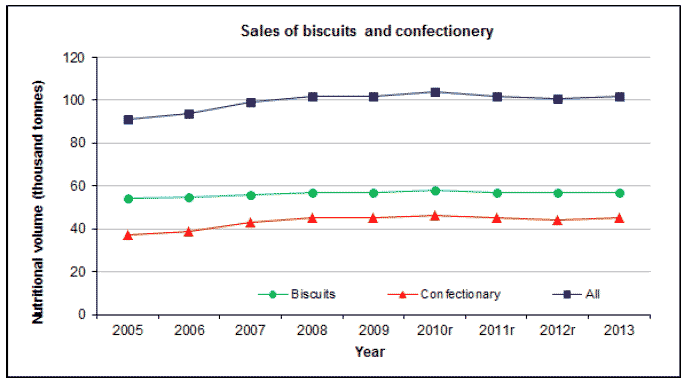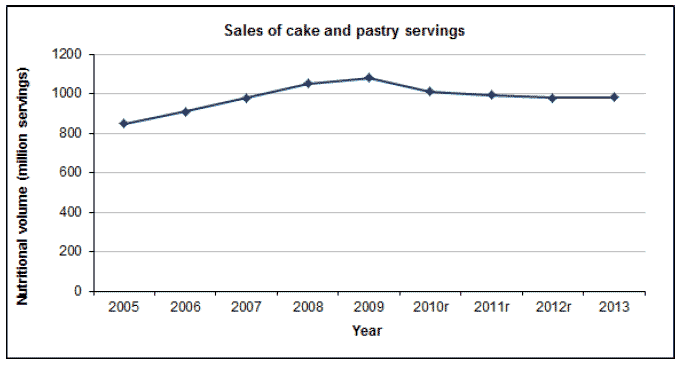Obesity Indicators 2014
This publication reports the latest available data for 16 indicators selected to monitor progress for the Prevention of Obesity Route Map. Most indicators are updated up to 2013, but for some indicators data is more or less up-to-date than this.
This document is part of a collection
Volume of sales of confectionery, biscuits, cakes and pastries[12]
Indicator Source: Food Standards Agency Scotland (Kantar Worldpanel)
LATEST RESULTS
- In 2013, the total volume of take home biscuits and confectionery purchased by Scottish households was just over one hundred thousand tonnes (102,000). Sales volumes have shown little change since 2008, and have increased from 91,000 tonnes since 2005.

- In 2013, just under one billion (980 million) servings of cake and pastry were purchased by Scottish households. Purchases have increased from 848 million in 2005, and have fallen slightly since 2009 when purchases were over one billion.

ABOUT THIS INDICATOR
Desired Outcome:
Reduced consumption of high energy food and drink.
Relevant Route Map action:
Action to work with retailers to encourage stocking of smaller and less energy-dense portions, with the Food Implementation Group to reduce saturated fat and sugar levels.
Geography available:
Scotland level only.
Equalities data:
Not applicable.
Rationale for including this indicator:
The aim of this indicator is to monitor the sales by volume of confectionery, biscuits, cakes and pastries in supermarkets in Scotland.
There is evidence that obesity is associated with over consumption of energy dense snack foods such as confectionery, biscuits, cakes and pastries. Moderate evidence exists in the literature for interventions aimed at reducing availability and affordability of energy dense foods and with a moderate rating for potential population effectiveness. The <acronym>ScotPHN</acronym> engagement process for the Route Map assessed the action as having high impact with medium to high effort.
Factors influencing this indicator:
- Availability and affordability of healthy choices
Contact
Email: Daniel Adams
There is a problem
Thanks for your feedback